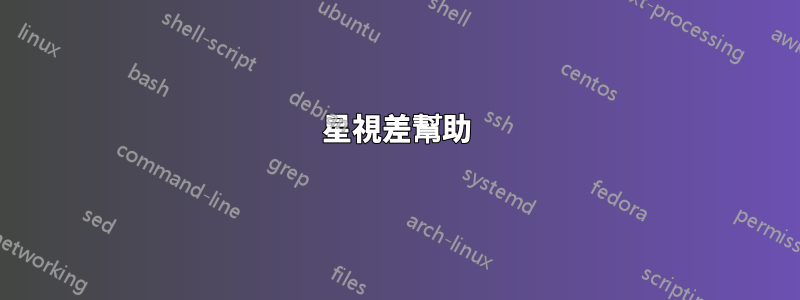
我對 Latex 還很陌生,我剛剛發現 tikZ。我幾乎無法製作三角形和角。我只是想問你是否可以告訴我如何開始以下項目:
序言:
\usepackage{appendixnumberbeamer}
\usepackage{booktabs}
\usepackage[scale=2]{ccicons}
\usepackage{pgfplots}
\usepgfplotslibrary{dateplot}
\usepackage{tikz}
\usetikzlibrary{arrows.meta,bending,decorations.markings,intersections,angles,quotes,babe l,lindenmayersystems,plotmarks}
\pgfdeclarelindenmayersystem{A}{%
\symbol{F}{\pgflsystemstep=0.6\pgflsystemstep\pgflsystemdrawforward}
\rule{A->F[+A][-A]}
}
\tikzset{
arc arrow/.style args={%
to pos 1 with length 2}{
decoration={
markings,
mark=at position 0 with {\pgfextra{%
\pgfmathsetmacro{\tmpArrowTime}{2/(\pgfdecoratedpathlength)}
\xdef\tmpArrowTime{\tmpArrowTime}}},
mark=at position {1-\tmpArrowTime} with {\coordinate(@1);},
mark=at position {1-2*\tmpArrowTime/3} with {\coordinate(@2);},
mark=at position {1-\tmpArrowTime/3} with {\coordinate(@3);},
mark=at position {1} with {\coordinate(@4);
\draw[-{Stealth[length=2,bend]}]
(@1) .. controls (@2) and (@3) .. (@4);},
},
postaction=decorate,
},bent arrow/.style={arc arrow=to pos #1 with length 2mm},
pics/strange bar/.style={code={\draw[thick] (-#1,0) -- (#1,0);}}
}
\usepackage{xspace}
\newcommand{\themename}{\textbf{\textsc{metropolis}}\xspace}
\usepackage{amsmath}
\usepackage{amssymb}
\usepackage[ngerman]{babel}
\usepackage[utf8]{inputenc}
\usepackage[T1]{fontenc}
\usepackage{animate}
\usepackage{selinput}
\SelectInputMappings{adieresis={ä}, germandbls={ß}}
框架:
\begin{frame}[fragile]
\hspace{2cm}
\begin{tikzpicture}[font=\sffamily]
\draw[name path=A] (0,5) coordinate(TL) -- (0,0);
\draw[bent arrow/.list={0.125,0.625}] (0,0) circle[x radius=2cm,y radius=0.5cm];
\draw[fill=blue] (-2,0) circle[radius=1.5mm];
\draw[fill=yellow] (0,0) circle[radius=2mm];
\draw[name path=B] (-2,0) -- (1,5) coordinate(TR);
\draw[fill=pink,name intersections={of=A and B,by=I}] (I) circle[radius=1.5mm]node[left=3pt]{Near star};
\pic [angle radius=1cm,angle eccentricity=.5,draw,"p" alias=p] {angle = TR--I--TL};
\draw[pink,latex-,thick] (p) -- ++ (1,-1) node[right,align=left,text=black]{parallax angle\\ = 1``};
\draw ([xshift=5mm]I) -- ++ (3,0) coordinate (R1) pic[rotate=45]{strange bar=0.3}
-- (0,0-|R1) coordinate (R2) pic[rotate=45]{strange bar=0.3}node[midway,above,sloped] {1 parsec}
-- (2.5,0);
\draw (-2,-0.3) -- (-2,-2) pic[rotate=45]{strange bar=0.3} -- (0,-2)node[midway,above]{1 AE} pic[rotate=45]{strange bar=0.3}
-- (0,-0.3);
\draw[bent arrow/.list={0.125,0.625},thin] (0,5) circle[x radius=1cm,y radius=0.15cm];
\draw[fill=pink] (TR) circle[radius=1mm] (-1,5) circle[radius=1mm];
\draw[pink,latex-,thick,shorten >=1mm] (TR) -- ++ (0.5,-1) node[right,align=left,text=black] (AP) {apparent parallax\\ motion near star};
\draw[pink,latex-,thick,shorten >=1mm] (-1,5) -- (AP.west);
\end{tikzpicture}
\end{frame}
答案1
歡迎來到 TeX-SE!這是為了給你一個開始。如果我誤解了某些內容,我先道歉。
\documentclass[tikz,border=3.14mm]{standalone}
\usetikzlibrary{arrows.meta,bending,decorations.markings,intersections,angles,quotes}
% https://tex.stackexchange.com/a/430239/121799
\tikzset{% inspired by https://tex.stackexchange.com/a/316050/121799
arc arrow/.style args={%
to pos #1 with length #2}{
decoration={
markings,
mark=at position 0 with {\pgfextra{%
\pgfmathsetmacro{\tmpArrowTime}{#2/(\pgfdecoratedpathlength)}
\xdef\tmpArrowTime{\tmpArrowTime}}},
mark=at position {#1-\tmpArrowTime} with {\coordinate(@1);},
mark=at position {#1-2*\tmpArrowTime/3} with {\coordinate(@2);},
mark=at position {#1-\tmpArrowTime/3} with {\coordinate(@3);},
mark=at position {#1} with {\coordinate(@4);
\draw[-{Stealth[length=#2,bend]}]
(@1) .. controls (@2) and (@3) .. (@4);},
},
postaction=decorate,
},bent arrow/.style={arc arrow=to pos #1 with length 2mm},
pics/strange bar/.style={code={\draw[thick] (-#1,0) -- (#1,0);}}
}
\begin{document}
\begin{tikzpicture}[font=\sffamily]
\draw[semithick] (80:12) arc(80:100:12) node[midway,above]{Distant stars};
\fill foreach \X in {82,86,90,92,95,99} {(\X:12) circle[radius=1.5pt] };
\draw[name path=A] (0,11.8) coordinate(TL) -- (0,0);
\draw[bent arrow/.list={0.125,0.625}] (0,0) circle[x radius=2cm,y radius=0.5cm];
\draw[fill=blue] (-2,0) circle[radius=2mm];
\draw[fill=yellow] (0,0) circle[radius=2mm];
\draw[name path=B] (-2,0) -- (1,11.8) coordinate(TR);
\draw[fill=pink,name intersections={of=A and B,by=I}] (I) circle[radius=2mm]
node[left=3pt]{Near star};
\pic [angle radius=1cm,angle eccentricity=1.3,draw,"p" alias=p] {angle = TR--I--TL};
\draw[pink,latex-,thick] (p) -- ++ (1,-0.5) node[right,align=left,text=black]{parallax angle};
\draw ([xshift=5mm]I) -- ++ (3,0) coordinate (R1) pic[rotate=45]{strange bar=0.6}
-- (0,0-|R1) coordinate (R2) pic[rotate=45]{strange bar=0.6}
node[midway,above,sloped] {1 parsec}
-- (2.5,0);
\draw (-2,-0.3) -- (-2,-2) pic[rotate=45]{strange bar=0.6} -- (0,-2)
node[midway,above]{1 AU} pic[rotate=45]{strange bar=0.6}
-- (0,-0.3);
\draw[bent arrow/.list={0.125,0.625},thin] (0,11.8) circle[x radius=1cm,y radius=0.15cm];
\draw[fill=pink] (TR) circle[radius=1mm] (-1,11.8) circle[radius=1mm];
\draw[pink,latex-,thick,shorten >=1mm] (TR) -- ++ (0.5,-1)
node[right,align=left,text=black] (AP) {apparent parallax\\ motion near star};
\draw[pink,latex-,thick,shorten >=1mm] (-1,11.8) -- (AP.west);
\end{tikzpicture}
\end{document}



